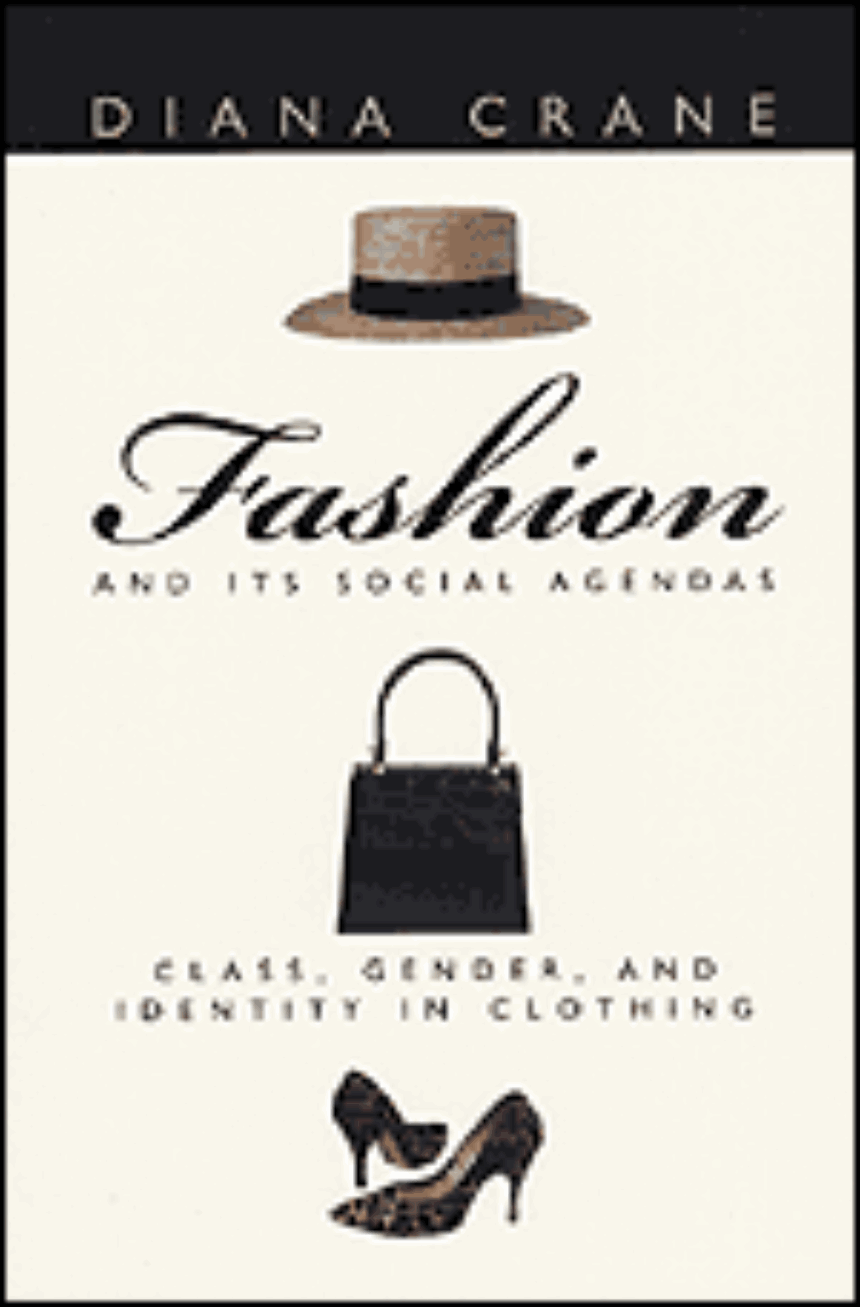Fashion and Its Social Agendas
Class, Gender, and Identity in Clothing
It has long been said that clothes make the man (or woman), but is it still true today? If so, how has the information clothes convey changed over the years? Using a wide range of historical and contemporary materials, Diana Crane demonstrates how the social significance of clothing has been transformed.
Crane compares nineteenth-century societies—France and the United States—where social class was the most salient aspect of social identity signified in clothing with late twentieth-century America, where lifestyle, gender, sexual orientation, age, and ethnicity are more meaningful to individuals in constructing their wardrobes. Today, clothes worn at work signify social class, but leisure clothes convey meanings ranging from trite to political. In today’s multicode societies, clothes inhibit as well as facilitate communication between highly fragmented social groups.
Crane extends her comparison by showing how nineteenth-century French designers created fashions that suited lifestyles of Paris elites but that were also widely adopted outside France. By contrast, today’s designers operate in a global marketplace, shaped by television, film, and popular music. No longer confined to elites, trendsetters are drawn from many social groups, and most trends have short trajectories. To assess the impact of fashion on women, Crane uses voices of college-aged and middle-aged women who took part in focus groups. These discussions yield fascinating information about women’s perceptions of female identity and sexuality in the fashion industry.
An absorbing work, Fashion and Its Social Agendas stands out as a critical study of gender, fashion, and consumer culture.
"Why do people dress the way they do? How does clothing contribute to a person’s identity as a man or woman, as a white-collar professional or blue-collar worker, as a preppie, yuppie, or nerd? How is it that dress no longer denotes social class so much as lifestyle? . . . Intelligent and informative, [this] book proposes thoughtful answers to some of these questions."-Library Journal
Crane compares nineteenth-century societies—France and the United States—where social class was the most salient aspect of social identity signified in clothing with late twentieth-century America, where lifestyle, gender, sexual orientation, age, and ethnicity are more meaningful to individuals in constructing their wardrobes. Today, clothes worn at work signify social class, but leisure clothes convey meanings ranging from trite to political. In today’s multicode societies, clothes inhibit as well as facilitate communication between highly fragmented social groups.
Crane extends her comparison by showing how nineteenth-century French designers created fashions that suited lifestyles of Paris elites but that were also widely adopted outside France. By contrast, today’s designers operate in a global marketplace, shaped by television, film, and popular music. No longer confined to elites, trendsetters are drawn from many social groups, and most trends have short trajectories. To assess the impact of fashion on women, Crane uses voices of college-aged and middle-aged women who took part in focus groups. These discussions yield fascinating information about women’s perceptions of female identity and sexuality in the fashion industry.
An absorbing work, Fashion and Its Social Agendas stands out as a critical study of gender, fashion, and consumer culture.
"Why do people dress the way they do? How does clothing contribute to a person’s identity as a man or woman, as a white-collar professional or blue-collar worker, as a preppie, yuppie, or nerd? How is it that dress no longer denotes social class so much as lifestyle? . . . Intelligent and informative, [this] book proposes thoughtful answers to some of these questions."-Library Journal
Read an excerpt.
304 pages | 55 halftones | 6 x 9 | © 2000
Culture Studies:
History: American History, European History
Sociology: Social Change, Social Movements, Political Sociology
Table of Contents
Acknowledgments
1. Fashion, Identity, and Social Change
2. Working-Class Clothing and the Experience of Social Class in the Nineteenth Century
3. Fashion, Democratization, and Social Control
4. Women’s Clothing Behavior as Nonverbal Resistance: Symbolic Boundaries, Alternative Dress, and Public Space
5. Fashion Worlds and Global Markets: From "Class" to "Consumer" Fashion
6. Men’s Clothing and the Construction of Masculine Identities: Class, Lifestyle, and Popular Culture
7. Fashion Images and the Struggle for Women’s Identity
8. Fashion and Clothing Choices in Two Centuries
Appendix 1: List of Monographs of Nineteenth-Century French Working-Class Families Published by Frëdëric Le Play and His Associates
Appendix 2: Interview Schedules; Questionnaire for Focus Groups
References
Index
1. Fashion, Identity, and Social Change
2. Working-Class Clothing and the Experience of Social Class in the Nineteenth Century
3. Fashion, Democratization, and Social Control
4. Women’s Clothing Behavior as Nonverbal Resistance: Symbolic Boundaries, Alternative Dress, and Public Space
5. Fashion Worlds and Global Markets: From "Class" to "Consumer" Fashion
6. Men’s Clothing and the Construction of Masculine Identities: Class, Lifestyle, and Popular Culture
7. Fashion Images and the Struggle for Women’s Identity
8. Fashion and Clothing Choices in Two Centuries
Appendix 1: List of Monographs of Nineteenth-Century French Working-Class Families Published by Frëdëric Le Play and His Associates
Appendix 2: Interview Schedules; Questionnaire for Focus Groups
References
Index
